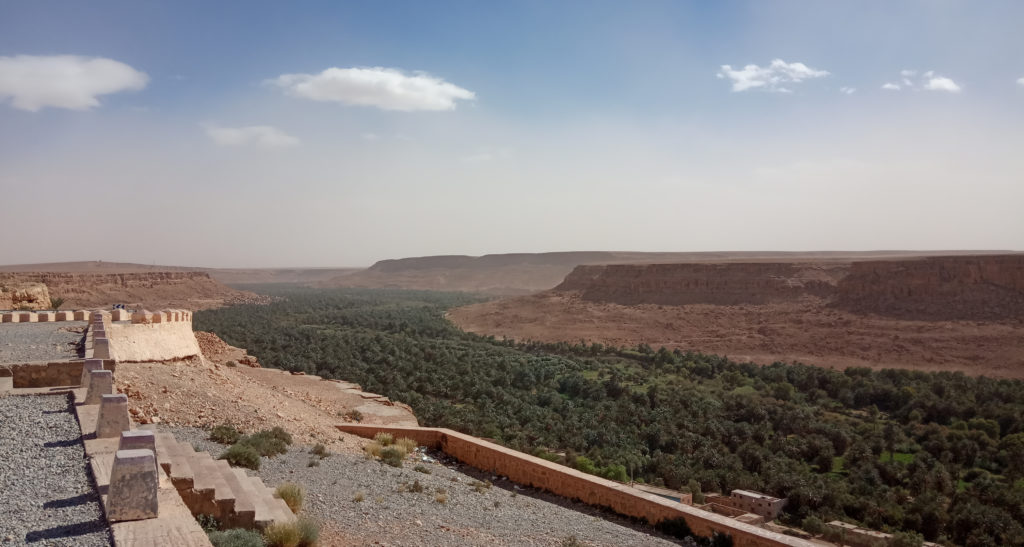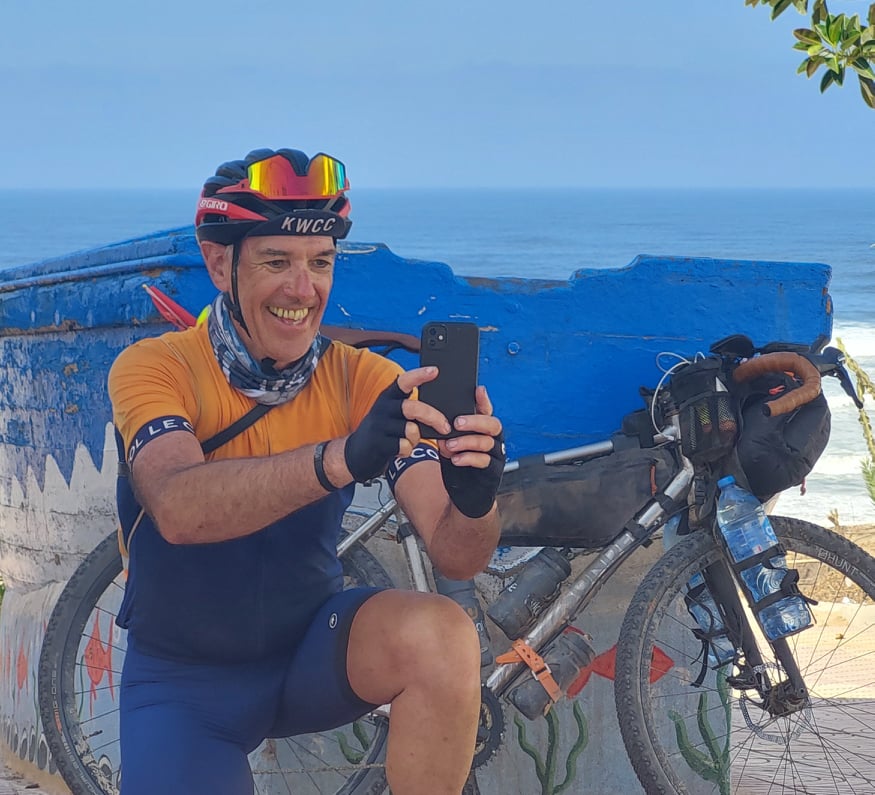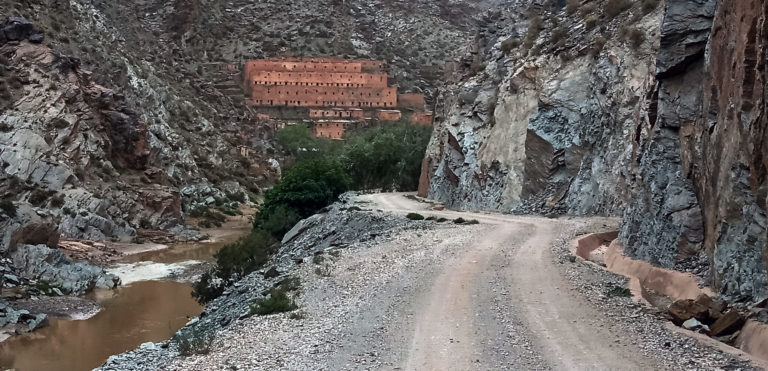The route leads the riders to 11 mandatory checkpoints.

Chefchaouen
It is the chief town of the province of the same name and is noted for its buildings in shades of blue, for which it is nicknamed the “Blue City”.
It was founded in 1471 by the Moulay Ali Ben Rachid, a distant descendant of the Islamic Prophet Muhammad. The original settlement consisted of just a small fortress, now referred to as Chefchaouen’s Kasbah. The fortress was erected to help defend the area from potential attacks by Portuguese invaders; at the time, Portugal was launching attacks against northern cities and towns in Morocco.
Ahouli mines
Ahouli is an abandoned mining village in Midle Atlas. Once one of the most important lead deposits in Morocco, the nearby Ahouli and Mibladen mines are now abandoned. It is located on a valley along upper Moulouya river, about 25 kilometers north from Midelt.
The French company Penarroya operated the sites from 1928 to the 1960s, employing hundreds of Moroccan workers and producing tens of thousands of tons of lead annually, most of which was exported to France.
Tizi Tigherrhouzine 2709m
Col de Tizi Tigherrouzine is a high mountain pass at an elevation of 2,709m above sea level, located in the Drâa-Tafilalet region of Morocco. It’s one of the highest roads of the country. The climb starts at Agudal 2,340m above sea level.

Todgha Gorge
Deep in the rocky Atlas Mountains lies the dramatic scenery of the Todra Gorge (called locally Todgha Gorge), a natural oasis created by the River Todra carving its way through limestone for many centuries. The gorge looks almost prehistoric with canyon walls that reach over 400 metres in height

Valée de Ziz
The Valée de Ziz is the biggest palm oasis in Morocco. The palm trees spans over about 70km along the Ouet Ziz canyon.

Erg Chebbi
In places, the dunes of Erg Chebbi rise to 150 meters from the surrounding hamada (rocky desert) and altogether span an area of approximately 28 kilometers from north to south and 5–7 kilometers from east to west lining the Algerian border.
La Cárcel Portuguesa
This crater was used as a film stage for a James Bond film, as well as the Brendan Fraser blockbuster film, The Mummy. The Mummy (1999) is set in Egypt, but filmed mostly in Morocco. In the southeastern Moroccan desert, an entire set was built for the fictional Egyptian city, Hamunaptra. The set for this fictional city was constructed in a dormant volcanic crater close to the real-life oasis town, Erfoud.
Tizi n’Tazazert 2283m
The Tizi n’Tazazert at an elevation of 2,283m above sea level connects Ikniouen with N’Kob. The road is paved since 2021. At the summit, there are a café, a restaurant, and an auberge. 2km south of the summit is another auberge with breathtaking views.

Zagora
The gateway to the desert. Zagora is nestled in the sumptuous Draa Valley, and presents a stunning natural contrast. The panel “Tombouctou 52 jours” is the last evidence of the city’s time as a caravan station.

The blue rocks
Nestled in the magnificent Almenn valley, the village of Tafraoute is surrounded by famous blocks of pink granite. In the middle of this setting is one of the most surprising artistic creations of the region: The Blue Rocks.
In 1984, the Belgian artist Jean Vérame found inspiration for his astonishing work in the center of granite blockfield. He colored the rocks of this desert region, mainly using a lot of blue paint.
Icht
Icht is a small town located in the Draa-Tafilalet region of southeastern Morocco. It overlooks the Jbel Bani, the nearby escarpment which often reflects beautiful orange sunsets.
From a distance, Icht appears to be a typical village of the region. Despite this, the kasbah is unique as it is located meters underground. At the ground level, small doors lead to a labyrinth of underground alleys that serve the various houses. Sometimes exceeding 3 floors. Each house is bridged by a big skylight, which illuminates and ventilates the rooms dug into the earth.



Tizi n’Tazazert 2283m
Sidi Ifni is a city located in southwest Morocco, on the shores of the Atlantic Ocean. It has a population of approximately 20,000 people and the economic base of the city is fishing.
Sidi Ifni served as a Spanish port city from the mid-19th century until it was ceded to Morocco in 1969. From the 1930s until the late 1960s, the town hosted a large Spanish population.
Sidi Ifni is known as a surf spot. Just a few meters from the finish you get the chance for some surf lessons.









